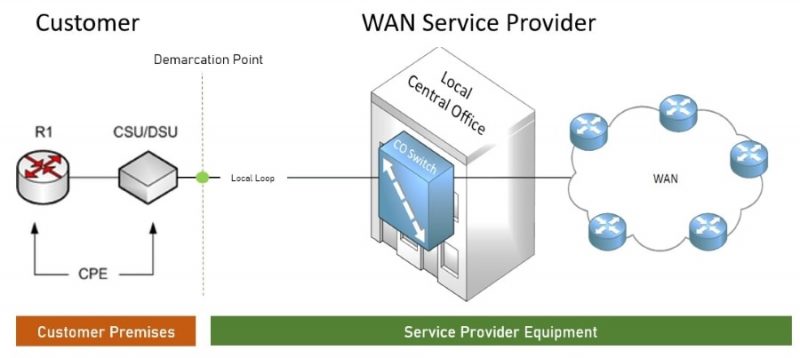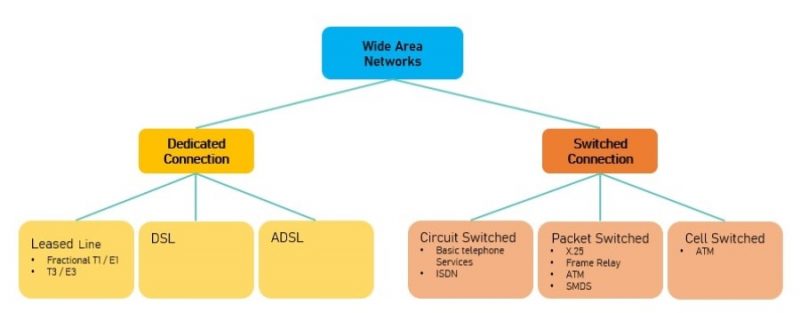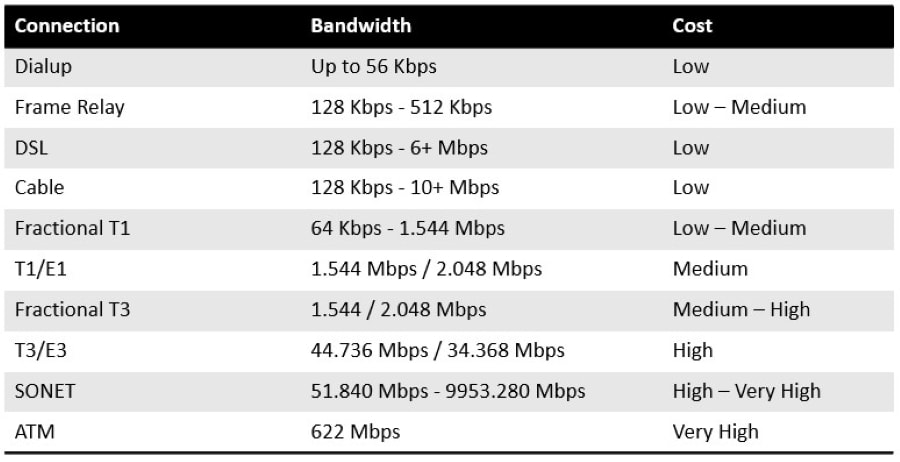What is a Wide Area Network? Understanding WANs

Because of wide area networks, telecommunication is possible, and organizations can create unified networks across different geographical areas.
A wide area network is not tied to a single location. Yet, it facilitates communication, information sharing, and a lot more between devices worldwide through service providers who establish these networks for the public, businesses, institutions, and governments – enabling users to communicate and share data regardless of their location.
Here we explain the fundamentals of wide-area networking and provide an understanding of some of the standard WAN technologies currently used.
On this page:
What is a Wide Area Network (WAN)?
A Wide Area Network (WAN) connects one or more local area networks (LAN) to form an extensive network of connected computers, devices, and hardware spanning a large geographical area – typically across cities, states and countries.
A WAN accesses or connects an organization’s locations, other organizations, external services, and remote users via data links supplied by carrier services.
Wide area networks help large enterprises carry out their everyday operations without any problem. Employees can use the network to communicate with their colleagues, share information and stay connected to organizational resources from anywhere in the world.

WAN Components and Equipment
The significant distinction between a WAN and a LAN is that an organization must subscribe to a WAN services provider to employ WAN carrier network services.
CPE (Customer Premises Equipment) refers to all devices, wiring, and hardware installed at the customer’s location. These devices are linked to the WAN service provider’s WAN. The customer may own the CPE or lease it from the service provider. A combination is also an option.

Typical equipment used to set up WAN connections include:
- Routers (classed as CPEs) – Offer routing between LAN and WAN networks. Equipped with WAN and LAN interface cards, routers route IP Packets between the LAN and WAN broadcast domains.
- CSU (Channel Service Unit) / DSU (Data Service Unit) – Converts data from the LAN into a WAN-appropriate frame and vice versa.
- Modem – Converts the digital signals produced by a computer into analog signals to be transmitted over the public telephone network. Another modem turns the analog signals into digital signals on the other end of the connection.
- Connectivity media – Such as Fiber, Wireless, Microwave or Satellite
- WAN Switch – A multiport device used in the provider network, operating at layer 2 of the OSI model. This device typically switches traffic such as Frame Relay, X.25 etc.
The term “service provider equipment” refers to all hardware and devices owned by the service provider. Other equipment and terminology often used in wide area networks include:
Demarc(Demarcation point)
|
The point at which the service provider’s wiring finishes and the customer’s wiring begins, for example, a meter box/meter cabinet within or outside your building |
DTE(Data Terminal Equipment) |
The client device that connects the customer’s network to the WAN, such as a router, a computer, or even a switch |
CSU/DSU(Channel Service Unit / Data Service Unit)
|
A device located between the router and the WAN connection used to translate WAN digital signals into router digital signals and vice versa.Traditionally, the CSU/DSU was a separate device but is now usually b built into routers. |
DCE(Data Circuit-terminating Equipment)
|
The DCE is a modem, which is now frequently integrated into interfaces or routers.The DCE takes data from the DTE, modulates it into an analog signal, and transmits it to the service provider via the wire. It also converts analog impulses received over the wire into digital signals. |
Local loop or “last mile”
|
The physical link that connects the customer’s demarcation point to the service provider network’s edge |
CO(Central Office) |
Premises where all lines leading from local loops to customers terminate. CO switches will be found where the lines terminate in this building. The type of CO switch utilized is determined by the technology (telephony, DSL, cable, and so on). |
Examples of Wide Area Networks (WANs)
Here are some practical examples of wide area networks:
- Internet – The internet itself is the most significant example of a WAN. It connects computers and devices across the world to provide easy access to required information and seamless communication.
- Mobile broadband – A cellular network that services areas across a region, or the entire country, is a wide area network that connects many users.
- Last mile – Another example of a WAN is a telecom company providing home internet services to people living in different cities by connecting the homes using fiber technology
- Business services – Consider a big telecom company owning networks in about 30 countries around the world. This company provides several services, including private leased circuits, to allow customers to interconnect facilities across locations with lines.
- Private network – A wide area network can be established by a private enterprise that connects its international and local offices and data centers globally. Such a private network can be implemented using dedicated leased lines from multiple telecom companies.
Types of Wide Area Network Connections
A wide area network can be established either through a dedicated connection or a switched connection.
These connection types use several technologies to establish connectivity to the WAN, such as packet switching, leased lines, cell relays, circuit switch networks, frame or packet relay, and other technologies.

Dedicated Connections
In computer networks and telecommunications, a dedicated connection is a communications medium or other facility dedicated to a single application instead of a shared resource such as the telephone network or the internet, referred to as a dedicated connection.
Leased Lines |
These lines help establish a connection between two points (point-to-point, or PPP) that provides a pre-established WAN communication conduit through an ISP to a remote destinationCan achieve data transmission speeds of up to 64GbpsExpensive to set up and maintain |
Digital Subscriber Line(DSL) |
Uses traditional copper-based telephone lines to transmit data via an ISPDelivers the same upstream and downstream (upload and download) performance |
Asymmetric Digital Subscriber Line(ADSL) |
ADSL is a type of DSL technology, a data communication technology that allows for quicker data transmission over a copper telephone line than the traditional voice modem utilized.It is similar to a digital subscriber line in some ways, but the only difference is that the upstream and downstream rates are different. |
Switched Connections
Switched networks establish a temporary connection between two points for either the duration of the session or transmission of data. The three types of switched network connections are circuit-switched, packet-switched, and cell switched.
Circuit Switched Network |
In a circuit-switched network, data is transferred through a single connection or single routeA new connection is established after data transfer over the connection is closed and before transferring data over the WAN |
Packet Switched Network |
One of the most widespread types of WANUses virtual connection for transferring data by creating a connection on first data transmission and using it as a permanent connectionData in this type of setting travels in the form of bit rate. Bits are transmitted as packet sequences over the network, and the delay depends on the traffic loadVaried bit rate as data travels in the form of bits that come together to make packetsFaster than a circuit-switched networkUsed for multi-path communicationThis type of network uses protocols like frame relays and x.25 |
Cell Switched Network |
Used when a constant transfer of bit rate is required, i.e. a simultaneous flow of data is requiredTransmits data as fixed bits traveling over the network in a fixed-size cell of 53bytesAn example of this protocol is ATM |
WAN Connection Speeds
WAN speeds, pricing, and availability vary across the globe. In North America, for example, high-bandwidth speeds such as T1 are readily available at reasonable prices.
Europe provides comparable speeds, such as E1, albeit at a higher cost. Other parts of the world provide limited WAN services with lesser bandwidth speeds, often up to 64 kbps, at a greater cost.
DSL and high-speed cable modems are two broadband possibilities. Broadband is now defined as any sustained speed greater than 128 kbps.
Broadband can connect remote office personnel and SOHOs to the central office LAN at high rates.
A cable modem can give up to 90 times the speed (4 Mbps) of a dial-up connection for remote access.
DSL is a technology that uses empty capacity on a conventional phone line delivering data transmission of up to 25 times the speed (about 1 Mbps) of a dial-up connection – without interfering with the analog telephone service.
Each WAN connection has benefits and drawbacks. Setting up an asynchronous dial-up connection, for example, provides only limited bandwidth, but a user can call into the workplace from anywhere using the existing telephone network.

Wide Area Network: Advantages & Disadvantages
Wide area networks have both advantages and limitations. Let us discuss some of them.
Advantages of WAN
- Connects a wide variety of devices like tablets, smartphones, computers, consoles, etc
- Covers a larger geographical area allowing offices located at distances to communicate easily
- Offers resource and information sharing by connecting workstations
- Information/files can be shared across a larger area
- These connections work using transmitters and receivers built into connected devices
Disadvantages of WAN
- The initial setup cost is high
- Requires skilled network professionals
- Because multiple technologies are present, it takes more time to address issues
- Security is lesser compared to other types of networks
- WANs falling under legal jurisdictions can be causes of disputes between governments for ownership and usage
- Global WANs need undersea cables which are subject to breaks and damages and take longer and cost more to repair
WAN Management, Security and Optimization
When designing internetworks, you must make various critical decisions about connectivity between distinct users or groups of users in your wide area network environment. Security, availability, and bandwidth are just a few examples of these decisions.
Building and Managing Wide Area Networks
When managing WAN connection, keep the following in mind:
- Availability—Each mode of connectivity includes inherent features in its design, usage, and implementation. Frame Relay, for example, is not available in all geographic regions.
- Bandwidth—WAN bandwidth is expensive, and businesses cannot afford to pay for more than they use. Determining WAN utilization is a crucial step in choosing the most cost-effective WAN services for your needs.
- Cost—WAN use charges typically account for 80% of the total information services budget. Therefore, when comparing different WAN services and service providers, the cost is a crucial concern. If you use the line for an hour a day, for example, you might wish to go with a dial-on-demand connection, such as an asynchronous or ISDN connection.
- Management ease—Network designers are frequently worried about the degree of effort involved in managing connections. Connection management encompasses both initial configuration and outgoing configuration actions during regular operation.
The capacity of a connection to react to varying traffic rates, regardless of whether the traffic is steady or experiences peaks, is referred to as traffic management. Dedicated lines are frequently more manageable than shared lines.
Application traffic can consist of many little packets, such as during a terminal session, or huge packets, such as during file transfer.
- QoS and dependability— QoS is a crucial worry for network managers these days because firms are spending less on WAN charges and are being more thoughtful about making the most of what they have. How important is the traffic that will transit over the link? A backup connection may be required.
- Access control—A dedicated connection may aid in access control. Still, electronic commerce cannot take place on a large scale without consumers have access to some component of your network.
Optimizing your Wide Area Network
Because physical barriers still constrain data transmission, the greater the distance between two devices, the longer it takes for data to flow between them. As a result, network congestion and lost packets can cause performance challenges.
Some of this can be addressed by WAN optimization, which increases the efficiency of data transmissions. However, because WAN networks can be costly, methods that decrease the quantity of traffic crossing WAN links include reducing redundant data (known as deduplication), compression, and caching (putting frequently used data closer to the end-user).
Traffic can be shaped to prioritize time-sensitive services like VoIP over less urgent traffic like email, which helps improve overall WAN performance. This can be codified in quality-of-service settings that define traffic classes based on the priority each class receives compared to others, the type of WAN connection that each traffic type will use, and the bandwidth each receives.
WAN Security
Traffic between WAN locations can be protected using virtual private networks (VPNs), which provide security on top of the underlying physical network, such as authentication, encryption, confidentiality, and non-repudiation.
In general, security is an essential component of any WAN rollout since a WAN connection represents a possible vulnerability through which an attacker could obtain access to a private network.
A branch office, for example, that does not have a full-time information security staffer may be sloppy in its cybersecurity policies. As a result, a hacker who entered the branch network could gain access to the primary corporate WAN, including valuable assets that would otherwise be impregnable.
Therefore, in addition to networking functions, many SD-WAN options include security services, which should be considered during deployment.
Conclusion
Wide area networks are essential computer networks as they connect devices over large geographical areas. They are generally implemented in working environments to facilitate communication between offices in different cities, states, countries, and continents.
This type of network connection empowers enterprises to achieve high-speed connectivity while keeping costs down. With wide-area networks, employees get the ability to work remotely while enjoying access to company resources and information. SD-WAN is expected to grow to become the technology defining the future of business communications.

